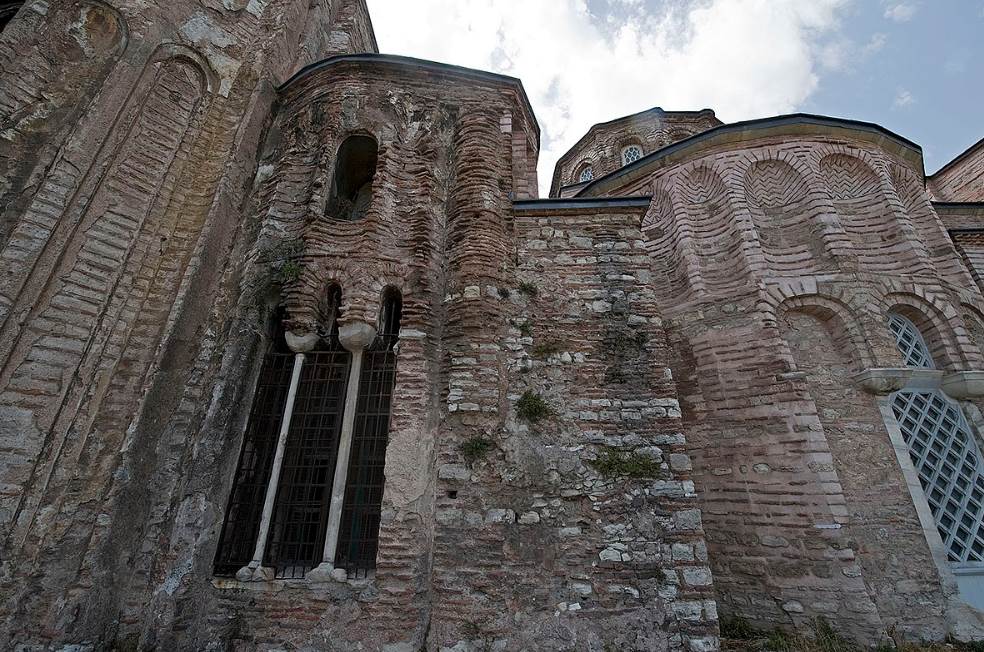There is no better place in the world to admire Byzantine architecture than in the largest city in Turkey.
Constantinople was the most important city in Europe and the Middle East from the 4th century until the Fall of the Eastern Roman Empire in 1453.
Today, the buildings in Istanbul provide great insight into the development of architecture between the Roman era and the Middle Ages.
In this article, you’ll discover some of the most interesting facts about the Zeyrek Mosque, a building with a history that goes back to the 12th century.
1. It’s located in the northern part of Istanbul’s historical center
The Zeyrek Mosque is the current name of a former Byzantine complex that consisted of 2 separate churches that were adjoined by a chapel.
The mosque is located in the district of the same name in the Fatih District of Istanbul. This is the historical heart of the city and the location of many other famous landmarks.
It’s situated just west of Atatürk Boulevard, a major thoroughfare in the northern part of the Fatih District.
This is a relatively impoverished part of the city. The building can be found in between two major mosques, the Fatih Mosque to the west and the Suleymaniye Mosque to the southeast.
The Hagia Sophia and the Topkapi Palace are located quite a distance further to the southeast.
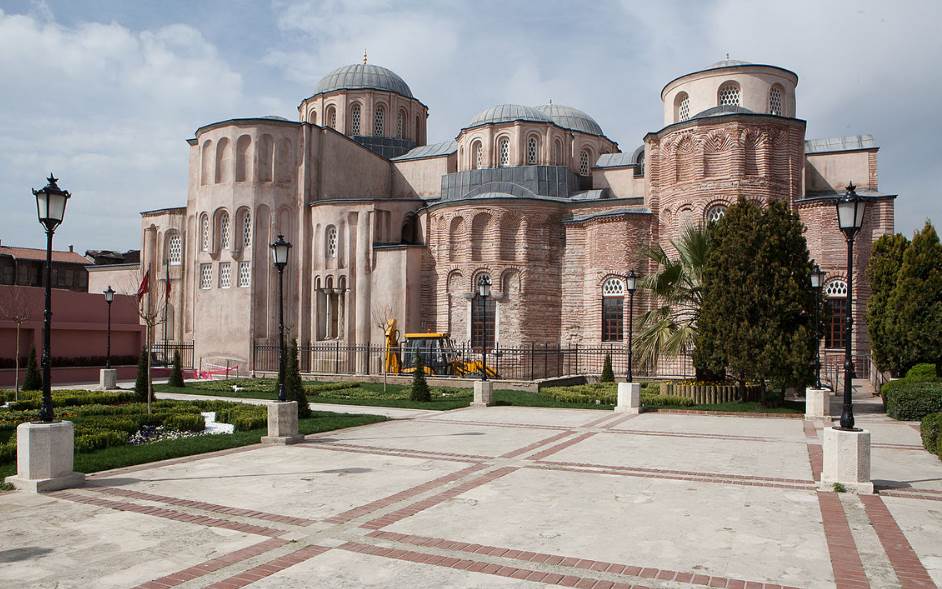
2. The first building to be completed was a church dedicated to Christ Pantokrator
The construction of the first building, which consisted of a monastery complex, library, hospital, and church, was initiated by Byzantine Empress Irene of Hungary (1088-1134).
It was completed between 1118 and 1124 and it was dedicated to Christ Pantokrator, a title that translates to “Christ the Almighty.”
This original building makes up the southern part of the complex and is also the largest section and features 2 domes.
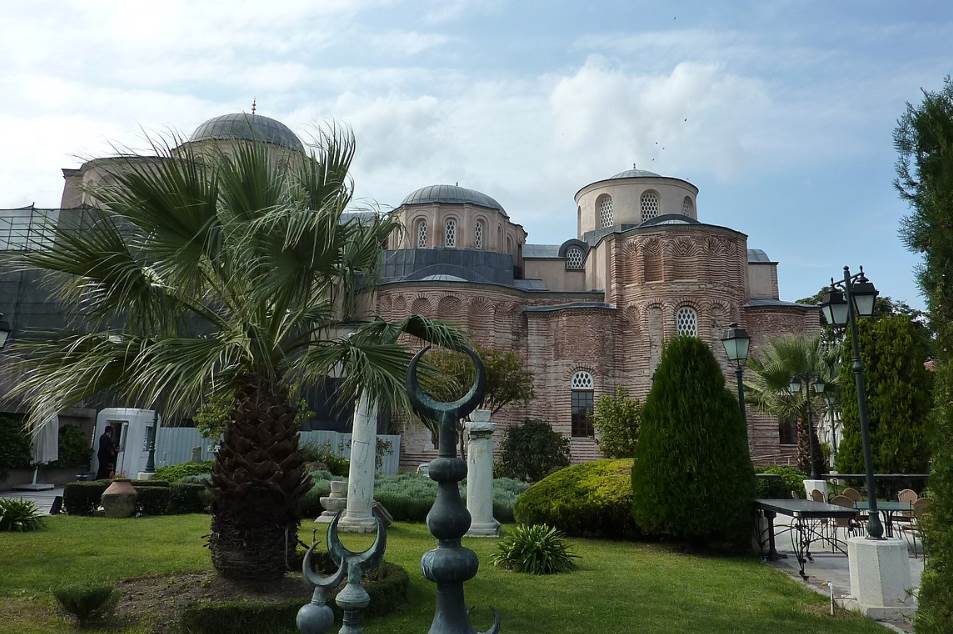
3. The second church was completed in 1136 to form a unified building
Irene of Hungary died in 1134 and this was the year that her husband, Emperor John II Komnenos (1087-1143), commissioned the construction of the second church.
Both churches were adjoined by a chapel dedicated to Saint Michael and therefore formed a unified Byzantine building.
The courtyard on the southern part of the complex was the final addition that was completed in 1136. The southern section is smaller and only features one dome.
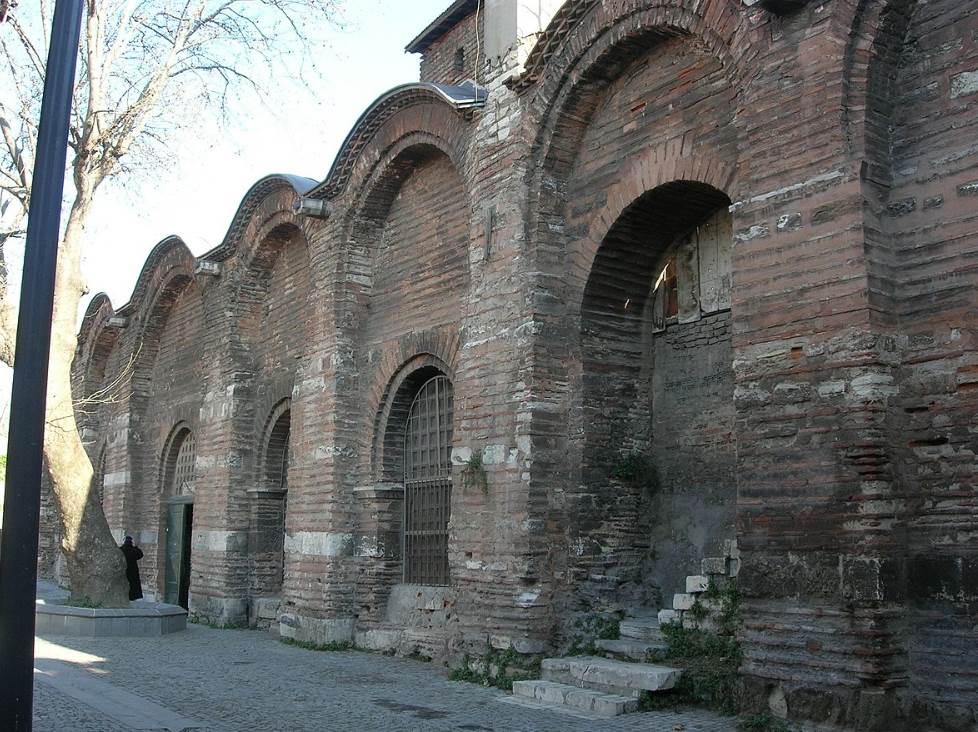
4. The chapel that joins the churches together became the imperial mausoleum
The chapel dedicated to Saint Michael was constructed for the purpose of serving as the imperial mausoleum.
Many important people were buried here, including John II Komnenos and his wife Irene of Hungary.
It also became the final resting place of several other members of the Komnenos and Palaiologos dynasties, including Empress Bertha of Sulzbach (1110-1159) who was the wife of Manuel I Komnenos (1118-1180).

5. The building was once used as an imperial palace during the Latin Empire
The 12th and early 13th centuries were turbulent periods in the history of the Byzantine Empire. It was the time of the Crusades and the Fourth Crusade resulted in the Sack of Constantinople in 1204.
This event initiated the Latin Empire, a period in history when the Crusaders controlled the most important city in Europe.
It was relatively short-lived as their rule ended in 1261 when the Byzantine Empire was restored by Michael VIII Palaiologos (1224-1282).
During the Latin Empire, the Zeyrek Mosque had an important function as the Venetian clergy used it to store an icon of the Theotokos Hodegetria which they worshipped.
Its importance gradually grew and it became the imperial palace of the final Latin Emperor, Baldwin II (1217-1273), the only Latin Emperor who was born in Constantinople.
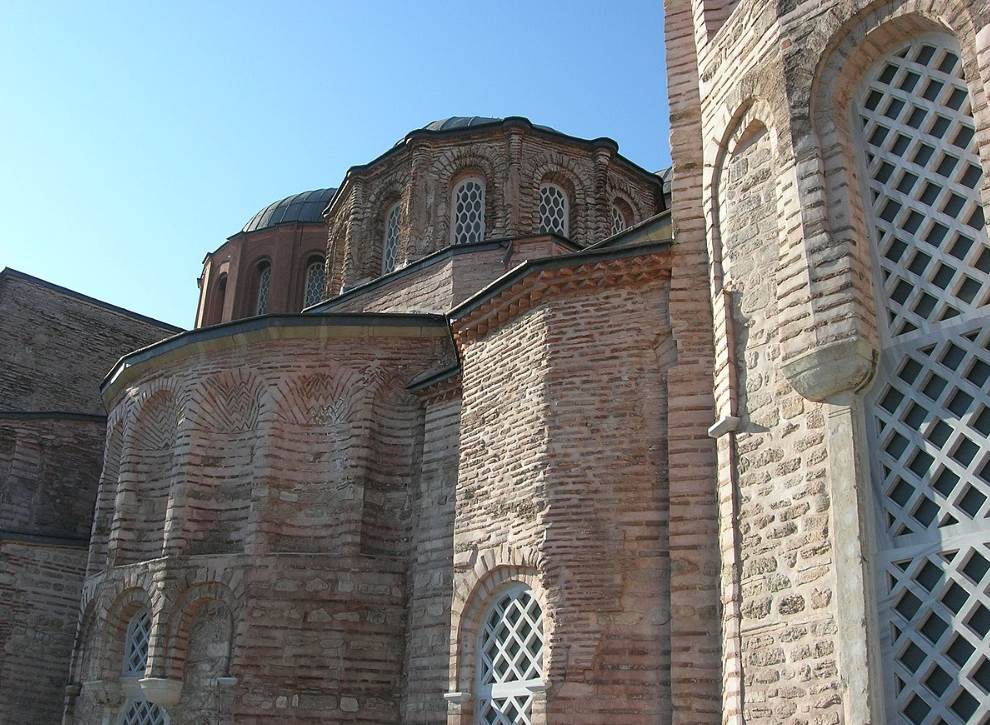
6. The Zeyrek Mosque is one of the best examples of Middle Byzantine architecture
Byzantine architecture is the term used to describe the architecture of buildings constructed in the Byzantine Empire.
The problem with this definition is that the Byzantine Empire lasted from 330 to the Fall of Constantinople in 1453. That’s why it’s defined by several periods.
Early Byzantine architecture was hardly any different from Roman architecture. The Zeyrek Mosque, however, is classified as a prime example of Middle Byzantine Architecture.
This period was defined by the recessed brick technique in which bricks were placed into a mortar bed three times as thick as the bricks themselves.
When you take a closer look at the masonry of this building, you can clearly see how this worked.
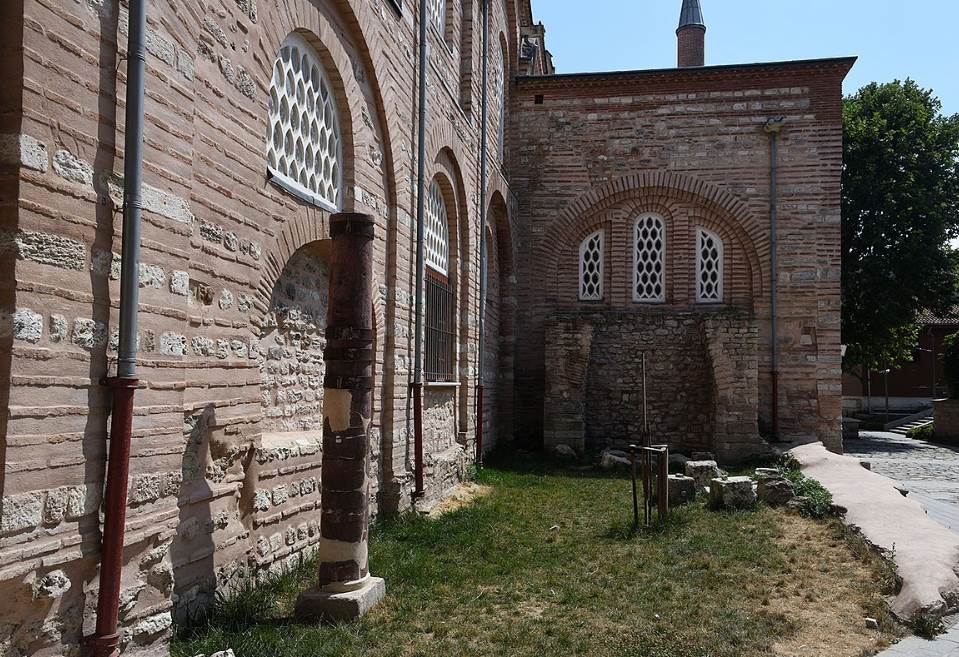
7. The interior was completely transformed following the Fall of Constantinople
The interior once featured stained glass windows and the typical Byzantine artworks that still decorate some of the most famous Byzantine buildings in the world.
Especially the buildings in Ravenna such as the Basilica of San Vitale and the Basilica of Sant’Apollinare in Classe feature great examples of Byzantine mosaics.
Unfortunately, the artwork inside the Zeyrek Mosque has been either removed or defaced over the centuries so it looks rather bleak in comparison.
The interior also features a remarkable opus sectile floor, an artwork in itself produced from colored marble, but this has been covered by a red carpet throughout the building.
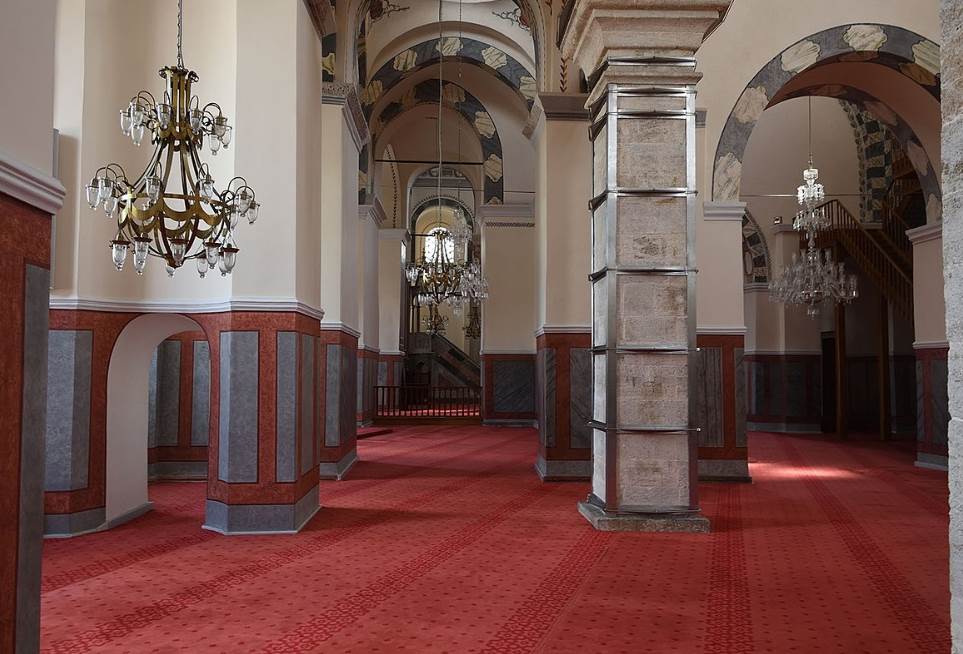
8. The crumbling building was added to the UNESCO List of endangered monuments
Unfortunately, the Zeyrek Mosque is in pretty bad shape. This is not surprising for a building that was completed in the 12th century, but still remarkable considering that the Hagia Sophia and Hagia Irene are much older.
Because of its historic importance as one of the best-preserved buildings of the Middle Byzantine period, it was inscribed as a UNESCO World Heritage site along with the other structures in the historical heart of Istanbul.
Because of its poor state, it was added to the list of endangered monuments as well. This will ensure this magnificent feat of architecture will be preserved forever.
